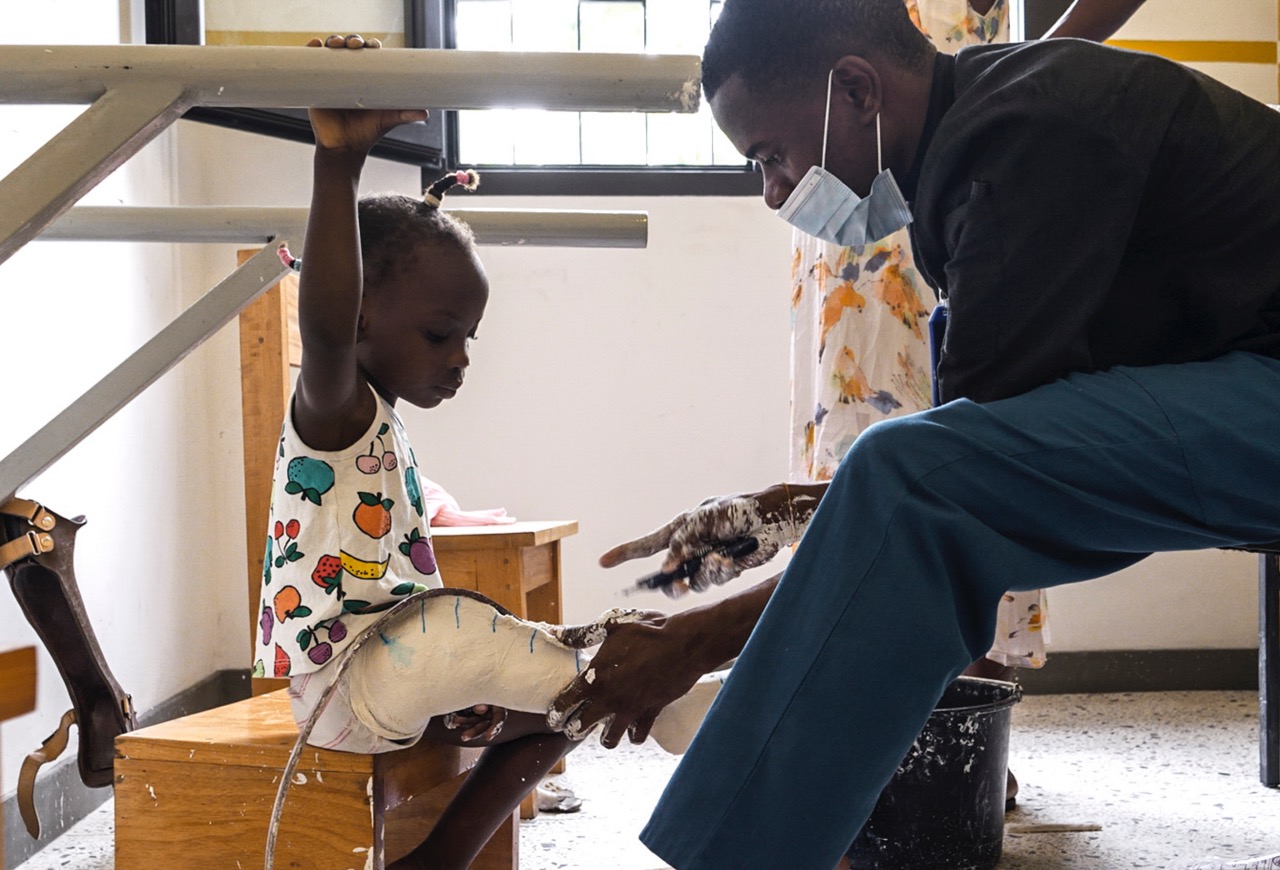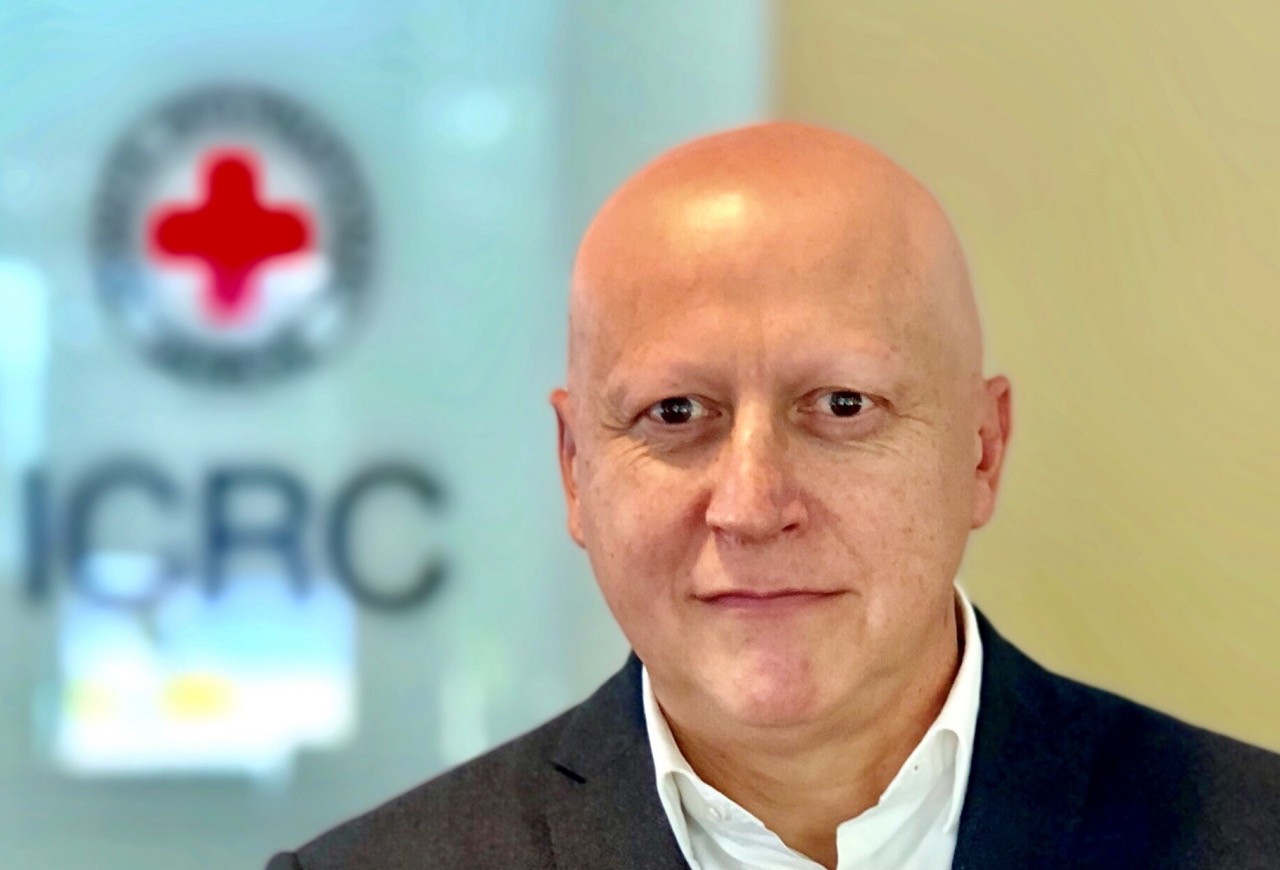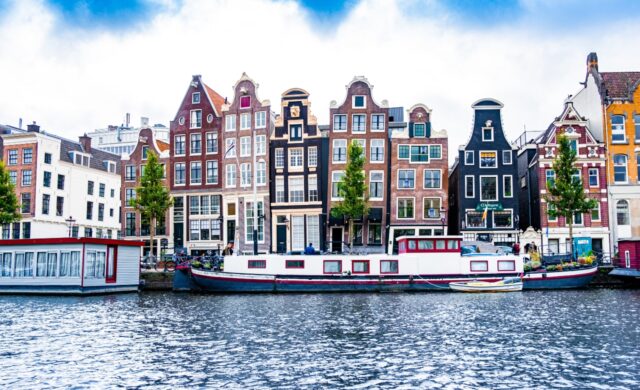The International Committee of the Red Cross has been at the forefront of the ever-changing humanitarian aid landscape for over 150 years. Its innovative financing models aim to better serve those affected by conflict.

In brief
- ICRC has over 150 years’ experience in the ever-changing humanitarian aid landscape
- Its three most recent financing projects show innovative ways to finance aid. They include a Humanitarian Impact Bond, a Climate & Environment Transition Fund, and the Goma West Resilient Water Project
- Juan Luis Coderque Galligo, head of new financing models, believes collaboration is key to “do more and better for people affected by conflict”
- Development agencies and financial institutions, including institutional investors, can no longer ignore the humanitarian crisis

Innovating and adapting to meet the needs of the ever-changing humanitarian landscape are skills that the International Committee of the Red Cross (ICRC) has been fine tuning since it was set up in 1863, according to Juan Luis Coderque Galligo, the organisation’s head of new financing models.
“The ICRC has been around for well over 150 years so we have learnt to innovate, adapt and reinvent ourselves over the years, while staying true to our mandate,” he says.
That mandate is to ensure humanitarian protection and assistance for victims of armed conflict and other situations of violence. The organisation, whose work today is based on the Geneva Conventions of 1949 and the resolutions of the International Conferences of the Red Cross and Red Crescent, is also a first responder to emergencies and works to promote respect for international humanitarian law and its implementation in national law.
But despite its long history of helping people living in countries ravaged by conflict and violence, the stakes are higher today than ever before.
Even before COVID-19, the United Nations forecast that 168 million people would require humanitarian assistance in 2020, and hundreds of millions more are said to live at risk in countries affected by fragility, conflict and violence (FCV) and by natural hazards.
Elsewhere, estimates from the World Bank suggest that more than 45% of the world’s poor will be living in countries affected by fragility or conflict by 2030.
This stark reality requires both new ways of working and new models of financing to cope with growing demand but also to improve upon traditional humanitarian responses.
The ICRC has addressed these fresh challenges with the launch of three new financial models (NFMs), the Humanitarian Impact Bond, the Goma West Resilient Water Project and most recently, the ICRC Climate and Environment Transition Fund.
Humanitarian Impact Bond
“The motivation for the decision to launch the three most recent financing projects, was to bring additional resources to address the growing humanitarian finance gap,” says Coderque Galligo.
“The number of people needing humanitarian assistance has not stopped growing for the past two decades. In the last 12 months alone, we’ve had a massive surge in humanitarian needs due to the armed conflict in Ukraine, the crisis in Afghanistan, and the food crisis in the Sahel, to name but three.”
The Humanitarian Impact Bond (HIB) was launched in 2017 for a five-year term, with CHF18m (€17.8m) from social investors New Re (part of Munich Re), Lombard Odier and others to build and operate three rehabilitation centres in Nigeria, Mali and the Democratic Republic of Congo (DRC).
Outcomes funders, including the governments of the UK, Belgium, Italy and Switzerland and the La Caixa Foundation, will pay the ICRC according to the results achieved. These payments will then be used to pay back the social investors partially, in full or with an additional return.
The HIB project, which reaches maturity in July, will undergo an external evaluation to measure its success and Coderque Galligo is confident it will not disappoint.
“Although we haven’t seen the final evaluation yet, I can candidly say that everyone is pleased with the results so far. We did much of the work during COVID, faced a coup d’état in Mali and had a fragile security situation in northern Nigeria. But despite these setbacks, the centres have been built, they’re delivering services, we have introduced a number of increased productivity measures, and so far, around 3000 people have been treated. We expect this number to increase to 5000 people per year over the next 2-3 years,” he explains.
These productivity measures have been captured in a new digital tool called the Digital Centre Management System, which the ICRC plans to replicate across 60-80 rehabilitation centres working with the organisation worldwide.
“We’ll try to structure this roll-out in conjunction with an outcomes-based grant, but we’re not looking to do this as an impact bond as it would represent a smaller investment of CHF7-8m (€6.9-7.9m).”
He explains that the impact bond structure is more costly and not suitable to all types of projects.
“One of the first things we learned from the HIB, was that the financial mechanism has to be adapted to the problem. You can’t mobilise additional resources without providing new value propositions to interest those who have some form of capital to spend.”
The ICRC Climate and Environment Transition Fund
One of those value propositions is to “green” the ICRC’s own infrastructure in seven countries, thereby saving up to 140,000 tons of CO2 emissions over 20 years and some CHF30–50m (€29.7-€49.5m) over the same time period, which the organisation plans to reinvest in humanitarian activities.
The other, is to integrate climate and environmental risks into the ICRC’s programs and operations, to improve the organisation’s environmental footprint, and help communities adapt to the combined effects of conflict and climate change.
These two goals are the focus of the ICRC Climate and Environment Transition Fund, which officially launched in January after receiving early seed funding from Lombard Odier.
The fund has since raised a further CHF3m (€2.9m) in contributions from the Foundation for the ICRC, the Government of Liechtenstein and the Swiss Agency for Development and Cooperation (SDC).
The ICRC says the fund will run over a number of years with financing consisting of a blend of grants from public, private and philanthropic sources and that a repayment and replenishment mechanism would be explored for implementation in 2023. The ICRC is also looking at the potential to open the fund to private investment.
Discussing the role of private investment in the humanitarian aid space, Coderque Galligo says: “There are a number of entry points for private sector participation in all of this. One is certainly philanthropic capital. Seed funding from philanthropic capital in particular, has been critical to our NFMs, as it gives us the room to explore and come up with concepts which can then gain traction. A second is through social investment using outcomes funding, which we trialled with the HIB, and a third is through technical private sector expertise, which has been critical across all three projects.”
Goma West Resilient Water Project
Coderque Galligo says there is also a fourth entry point, which is about humanitarian projects laying the groundwork and de-risking the opportunities for investment from the private sector. Essentially, making it easier for private investors to pick up where they have left off.
This is one of the objectives of the Goma West Resilient Water Project (GWWP), in the DRC, which kicked off in 2019 and aims to bring clean water to 330,000 city residents by 2026.
The project has raised CHF17m (€16.8m) of its CHF40m (€39.6m) target as of last month from the World Bank, the SDC, the Swedish International Development Cooperation Agency and the Fondation Lombard Odier.
The funds raised will pay for the construction of a drinking water supply system composed of water treatment plants, pumping stations and reservoirs.
“We have been working in Goma for a long time and over the past three years have been preparing the ground to build new infrastructure but also a financially stable business model and local capacity to manage it in a sustainable way,” says Coderque Galligo. “As humanitarian actors, we need to work in such a way as to remove certain market barriers, so that more private sector operators take interest and deploy both capital and people to deliver services in a more sustainable way in fragile settings.”
Looking ahead
Coderque Galligo explains that until recently, humanitarian and development actors had “lived on two separate planets”, with humanitarian organisations working in fragile and conflict settings on the basis of grants and over relatively short timeframes, giving way to development actors once conflict had stopped.
“Things don’t work that way anymore” he says, highlighting the tragedy of multi-year conflicts in Colombia, Yemen, the Central African Republic, the DRC, Iraq, Syria and Afghanistan.
“We have entered a new normal for many people subjected to conflicts with seemingly no end,” he says. “Innovative finance is about recognising that if we want to do more and better for people affected by conflict, we need to collaborate across the humanitarian sector with development institutions, social investors, philanthropic organisations, as well as with host governments, and ultimately, pave the way for private sector intervention for a specific service.”
Coderque Galligo adds that development agencies and financial institutions, including institutional investors, could no longer ignore the humanitarian crisis: “In the not-too-distant future, 50% of the world’s poorest will live in fragile settings, in countries affected by conflict and violence. So, if development agencies and other investors want to end poverty, they need to do more in fragile settings. They can no longer stick their heads in the sand as it represents half their mandate. If they don’t, more geopolitical problems will follow.” he adds.
In addition to the Digital Centre Management System roll-out, Coderque Galligo expects to see more “Goma-style projects” being replicated in other locations but insists that it’s not about “copy pasting”, with projects requiring a lot of stakeholder mobilisation, alignment of interest and time.
With the devastating war in Ukraine continuing for the foreseeable future, Impact Investor was also keen to understand if any of these new financial models could be deployed to the country. “Not in the short term,” says Coderque Galligo. “In the longer-term, the answer is that sadly, we will probably be exploring new financial approaches in Ukraine in view of the growing needs, the interest and the opportunities given that it’s a very developed country by comparison to many of our other locations.”





